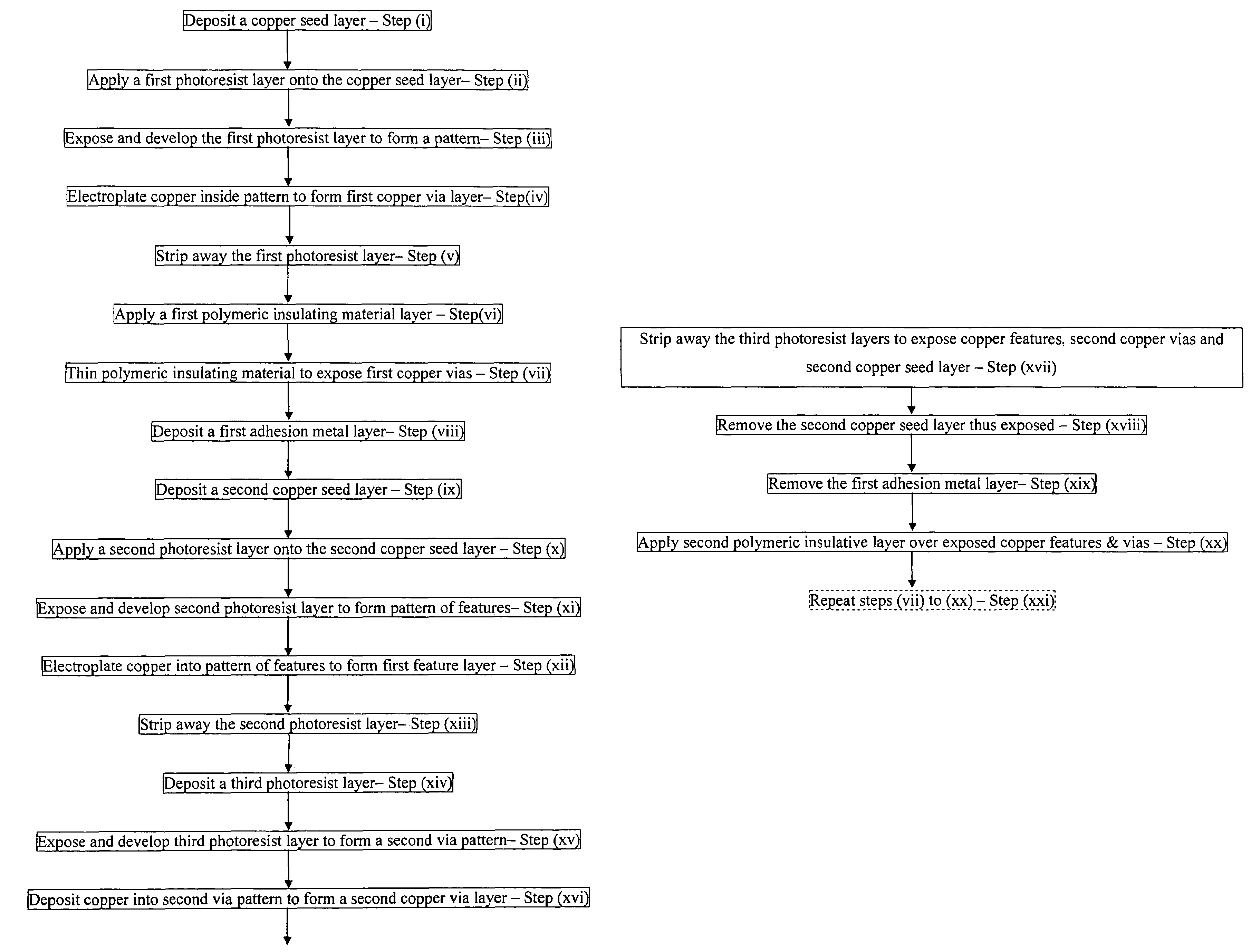Integrated circuit support structures and their fabrication
a support structure and integrated circuit technology, applied in the direction of printed circuit manufacturing, printed circuit aspects, semiconductor/solid-state device details, etc., can solve the problems of increasing complexity and increasing the number of input/output contacts, increasing the complexity of ics, etc., and achieve the effect of large-scale manufacturing
- Summary
- Abstract
- Description
- Claims
- Application Information
AI Technical Summary
Benefits of technology
Problems solved by technology
Method used
Image
Examples
Embodiment Construction
[0160]The present invention relates to a novel processing method for fabricating electronic substrates and to the novel substrates obtainable by that method. Some of the fabrication steps, such as the steps or deposition of photoresist, its exposure and subsequent removal are not described herein in any detail since the various alternative materials and processing routes are well known, and their detailing will render this description unnecessarily cumbersome. Suffice to say, when designing a specific process for a specific product, persons of the art will make appropriate selections from the various alternative materials and processing routes using well established considerations based on parameters such as batch size, substrate complexity and component resolution. Furthermore the actual architecture of the substrate is not described as a general method is provided that may be used to produce a variety of end products. What is described hereinbelow is a method for fabricating multi...
PUM
 Login to View More
Login to View More Abstract
Description
Claims
Application Information
 Login to View More
Login to View More - R&D
- Intellectual Property
- Life Sciences
- Materials
- Tech Scout
- Unparalleled Data Quality
- Higher Quality Content
- 60% Fewer Hallucinations
Browse by: Latest US Patents, China's latest patents, Technical Efficacy Thesaurus, Application Domain, Technology Topic, Popular Technical Reports.
© 2025 PatSnap. All rights reserved.Legal|Privacy policy|Modern Slavery Act Transparency Statement|Sitemap|About US| Contact US: help@patsnap.com



